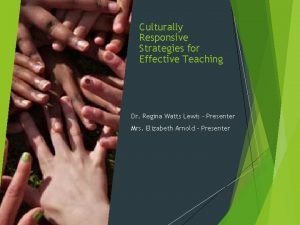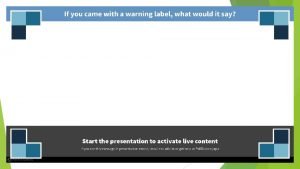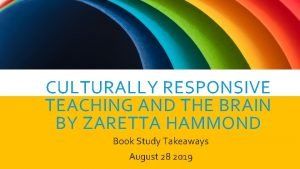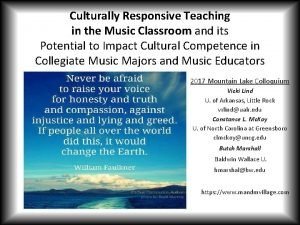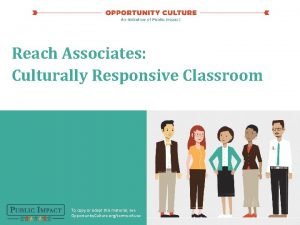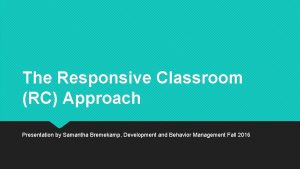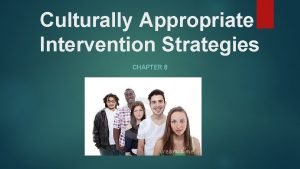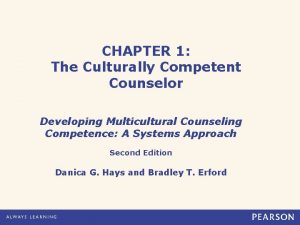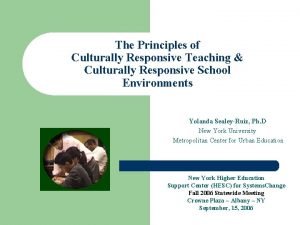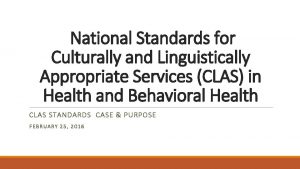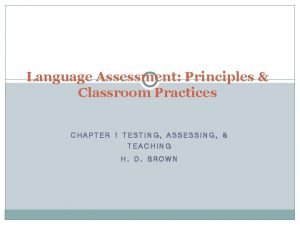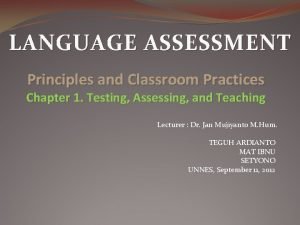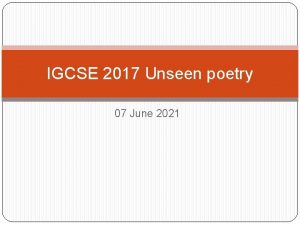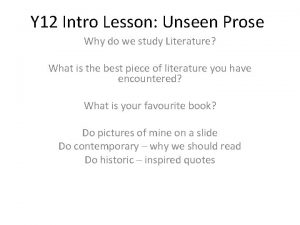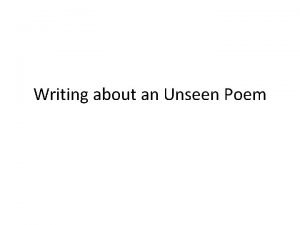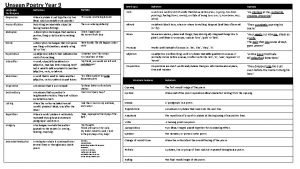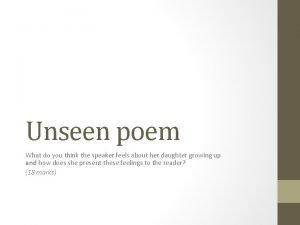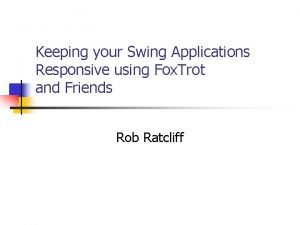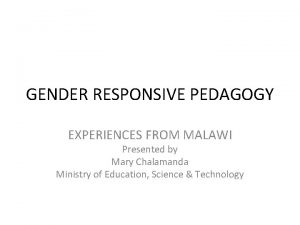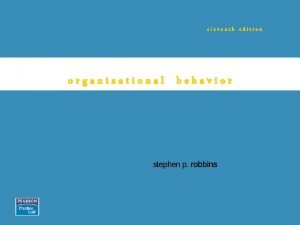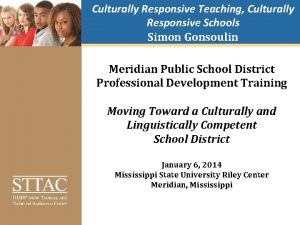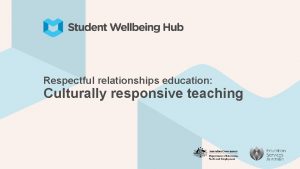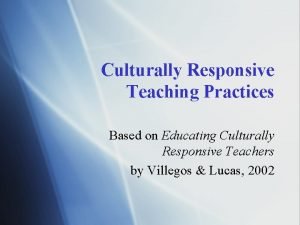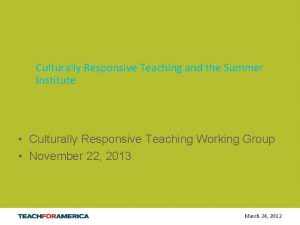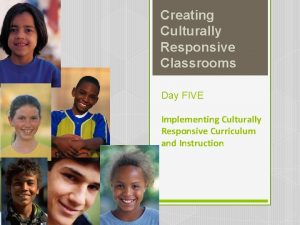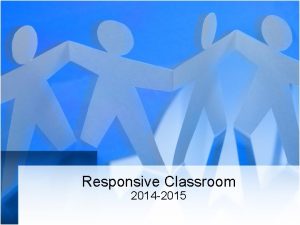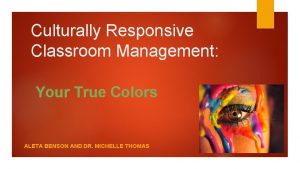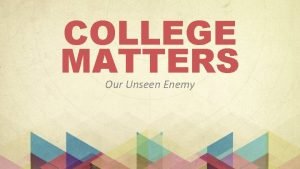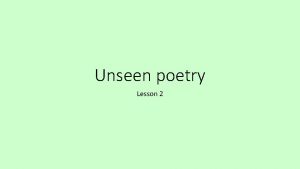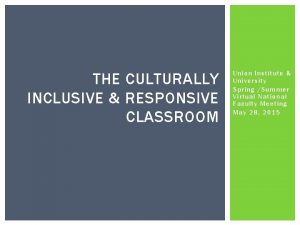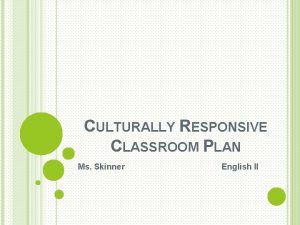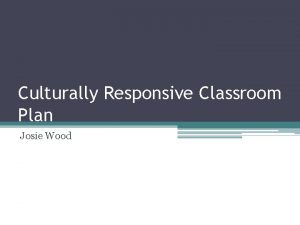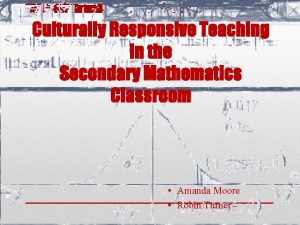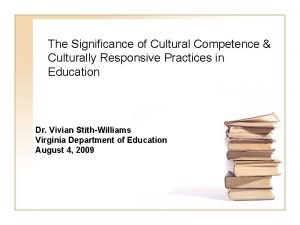Classroom Management Culturally Responsive Practices Making The Unseen













































- Slides: 45


Classroom Management & Culturally Responsive Practices Making The Unseen……. SEEN Presented by Jason Byars Lisa Pearce Linda Porter

Making the Unseen …… Seen Classroom climate Cultural mismatch between home, school and educator Cultural responsive practices Toolbox of strategies and interventions: PBIS best practices

WHY DOES IT MATTER? 1. Majority of discipline referrals come from the classroom! 2. 44% of Teachers leave within the first five years! 3. Teachers vs. The Invisibles 4. It’s about the process, not the end result! 5. Our students needs us NOW more than ever!

WHY DOES IT MATTER? 85% of Teachers receive no training on how to manage behaviors. 1 in 5 Students have a mental illness 1 in 3 Have a learning disability 1 in 10 are gifted 62% are classified disadvantaged

WHY DOES IT MATTER?

WHY DOES IT MATTER? LANGUAGE RACE SEXUAL ORIENTATION RELIGON AGE GENDER ETHNICITY PERSPECTIVE NATIONALITY

How well do you know this generation?

How well do you know this generation? Generation Y Generation Z Alias: Millennials or Digitals Alias: Hackers or Homelanders Born: 1983 – 2000 Born: 2001 – 2018 Grew up in a time of expansion Grew up in a time of recession Norm for connection: hangout, parties Norm for connecting: social media 1 st Tech Gadget: CD’s, i. Pod 1 st Tech Gadget: i. Phone Myspace, gamers or sharers Snapchat/Whisper - disappear Shaping Events: Columbine, dot. com era, i. Pod Shaping Events: 9/11, terrorist attacks, economic recession College: Equates to a great job, college visits, graduate in 4 years. College: ? , online attend where ever I want, graduate in 3, 5, or 10 years?

How well do you know this generation? COLD WAR 1947 - 1991 POST TERRORISM

How well do you know this generation? Technology, Instant Messaging & Surfing

How well do you know this generation? HOW DOES THIS GENERATION COMMUNICATE?

How well do you know this generation?

How well do you know this generation?

Creating Classroom Climate NO SECRETS CLASSROOM VISION & EXPECTATIONS RELATIONSHIPS CULTURAL RESPONSIVENESS

Creating Classroom Climate NO SECRETS CLASSROOM VISION & EXPECTATIONS

NO SECRETS CLASSROOM WHILE THE MISSION IS ABOUT TODAY, THE VISION IS ABOUT THE FUTURE! Where are we going? PLANS, PURPOSE, DESIRED RESULT PRINCIPLES OR STANDARDS OF BEHAVIOR, WHAT’S IMPORTANT? CLASSROOM & BEHAVIOR MANAGEMENT RELATIONSHIPS

Think About It……. What does your ideal classroom look like?

NO SECRETS CLASSROOM Example Mission Vision & Goals

NO SECRETS CLASSROOM Expectations Mrs. Porter’s Vision A stimulating community where students feel safe in communicating their needs, comfortable in taking learning risks, and challenged to work toward their greatest potential.

NO SECRETS CLASSROOM Expectations • 3 -5 EXPECTATIONS • POSITIVELY STATED • EXPLICITLY DEFINED • OBSERVABLE/MEASURABLE • VISIBLE “WHERE DOES IT LIVE? ”

NO SECRETS CLASSROOM Expectations WHERE DOES IT LIVE? IS IT VISIBLE?

NO SECRETS CLASSROOM Expectations INCLUDE STUDENT VOICE

What Do The Tiers of Interventions and Elements Look Like? Primary Behavior Expectations Defined Behavior Expectations Taught Clearly defined consequences for problem behaviors Differentiated Instruction for Behavior Data collected on interventions Secondary Progress Monitoring for at risk students System for increasing structure and predictability System for increasing contingent adult feedback Increase home/school communication Collect data on interventions tried Tertiary FBA (full and complex) supports in place Team-based comprehensive assessment Linking of academic and behavior supports Wrap Around Supports: Behavior Specialist, Project AWARE, 1: 1 Supports Counselors Involved

NO SECRETS CLASSROOM PR OC ED UR ES ROUTINES

NO SECRETS CLASSROOM PROCEDURES The “how” in meeting expectations! ROUTINES Have to be taught and practiced Telling is not teaching. For a child to learn something new, it needs to be repeated an average of 8 times. For a child to unlearn an old behavior and replace with a new behavior, the new behavior must be repeated an average of 28 times.

NO SECRETS CLASSROOM PROCEDURES The “how” in meeting expectations! ROUTINES • • • Define and teach classroom routines How to enter class and begin to work How to predict the schedule for the day What to do if you do not have materials What to do if you need help What to do if you need to go to the bathroom What to do if you are handing in late material What to do if someone is bothering you. Signals for moving through different activities.

Creating Classroom Climate

Relationships Precedes learning Continuous, ongoing The MOST powerful tool we have FACT: Behavior is functionally related to the teaching environment.

Creating Classroom Climate


Creating Classroom Climate “There will never be enough consequences to motivate tough kids to learn and to behave if we are not first developing positive relationships. And without positive teacher-student relationships, no discipline plan will work. ” ~Jim Fay

Creating Classroom Climate WHEN RELTIONSHIPS ARE FRACTURED

Creating Classroom Climate CULTURAL RESPONSIVENESS

Creating Classroom Climate A DEFINITION OF CULTURE Culture is the shared perceptions of a group’s values, expectations and norms. It reflects the way people give priorities to goals, how they behave in different situations, and how they cope with their world and with one another. People experience their social environment through their culture. Culture is transmitted from generation to generation

Creating Classroom Climate Race & Poverty • Race is one of the most difficult topics in education • Poverty occurs among people of all ethnic backgrounds • Race affects our students at every level - social, economic, educational, emotional, and psychological • Poverty can be generational • Race and culture affect teaching and learning from primary to high school • Schools operate from middle-class norms

Creating Classroom Climate Factors That Negatively Affect Culture • Youth Mental Health • Poverty • Trauma • Race

Creating Classroom Climate Cultural Competence • The ability to understand, communicate with and effectively interact with people across cultures. • Cultural competence encompasses: being aware of one's own worldview. Developing positive attitudes towards cultural differences. • “Cultural gap” contributes to the achievement gap STEP 1 - We must examine our own biases. WE ARE ALL BIASED.

Creating Classroom Climate STAND UP 1. GROWING UP 2. I KNOW HOW TO…. 3. LEVEL OF CULTURAL COMPETENCE…

Creating Classroom Climate Cultural Competence Skill • Valuing diversity • Being culturally self aware • Understanding the dynamics of cultural interactions • Institutionalizing Cultural Knowledge and Adapting to Diversity

Creating Classroom Climate Becoming Culturally Characteristics of Cross Responsive Culture Communication Apply knowledge of ourselves and others to change our practices and expectations that value only one group’s perspective FACT: 80% of teachers are white, middle class females. • Cultural “code-switching” • Invisible Expectations • Hidden Rules

Creating Classroom Climate Cultural Competence Surface Culture • Food • Fashion • Holidays • Music • Language Deep Culture • Communication Style • Gestures • Eye Contact • Body Language • Displaying Emotions • Manners • Self Values • Expectations • Authority • Religion • Relationships

Creating Classroom Climate Instructional changes are made to accommodate differences “Singing harmony to our kids song. . . rather than forcing them to always sing our song” Classroom is managed with firm, consistent, loving control “Respect begins with the teacher”

WHY DOES IT MATTER? LANGUAGE RACE SEXUAL ORIENTATION RELIGON AGE GENDER ETHNICITY PERSPECTIVE NATIONALITY

THANK YOU
 Culturally responsive vs culturally relevant
Culturally responsive vs culturally relevant Culturally responsive classroom management
Culturally responsive classroom management Vdoe culturally responsive teaching
Vdoe culturally responsive teaching Culturally responsive teaching and the brain book study
Culturally responsive teaching and the brain book study Culturally responsive teaching in music education
Culturally responsive teaching in music education Culturally responsive teaching self assessment
Culturally responsive teaching self assessment Responsive classroom youtube
Responsive classroom youtube Culturally deprived definition
Culturally deprived definition Giger and davidhizar transcultural assessment model
Giger and davidhizar transcultural assessment model Leininger
Leininger Culturally appropriate intervention strategies
Culturally appropriate intervention strategies Culturally competent counselor
Culturally competent counselor Working with culturally and linguistically diverse families
Working with culturally and linguistically diverse families Culturally relevant pedagogy
Culturally relevant pedagogy National culturally and linguistically appropriate services
National culturally and linguistically appropriate services Current issues in classroom testing
Current issues in classroom testing Summative evaluation
Summative evaluation Btech smart classes
Btech smart classes What is inference
What is inference War making and state making as organized crime
War making and state making as organized crime Unseen poetry essay example
Unseen poetry essay example Unseen poetry igcse
Unseen poetry igcse Pearson edexcel english literature paper 1
Pearson edexcel english literature paper 1 Unseen prose
Unseen prose Introduction to unseen prose
Introduction to unseen prose Unseen poetry timings
Unseen poetry timings Prose commentary
Prose commentary An unseen beauty of bangladesh paragraph for class 6
An unseen beauty of bangladesh paragraph for class 6 Yesterday by patricia pogson analysis
Yesterday by patricia pogson analysis How to leave the world that worships should analysis
How to leave the world that worships should analysis Oxymoron verb
Oxymoron verb Dangers seen and unseen
Dangers seen and unseen Unseen essential
Unseen essential Unseen passage
Unseen passage What is the speaker in the poem doing?
What is the speaker in the poem doing? Prose examples in literature
Prose examples in literature Faith in the unseen
Faith in the unseen Pearson unseen material
Pearson unseen material Eduqas english literature gcse past papers
Eduqas english literature gcse past papers Ninetieth birthday analysis
Ninetieth birthday analysis Synthesizing images of humans in unseen poses
Synthesizing images of humans in unseen poses Plissit model
Plissit model Insensible loss formula
Insensible loss formula Java swing responsive
Java swing responsive Gender responsive pedagogy
Gender responsive pedagogy Customer responsive organization
Customer responsive organization
